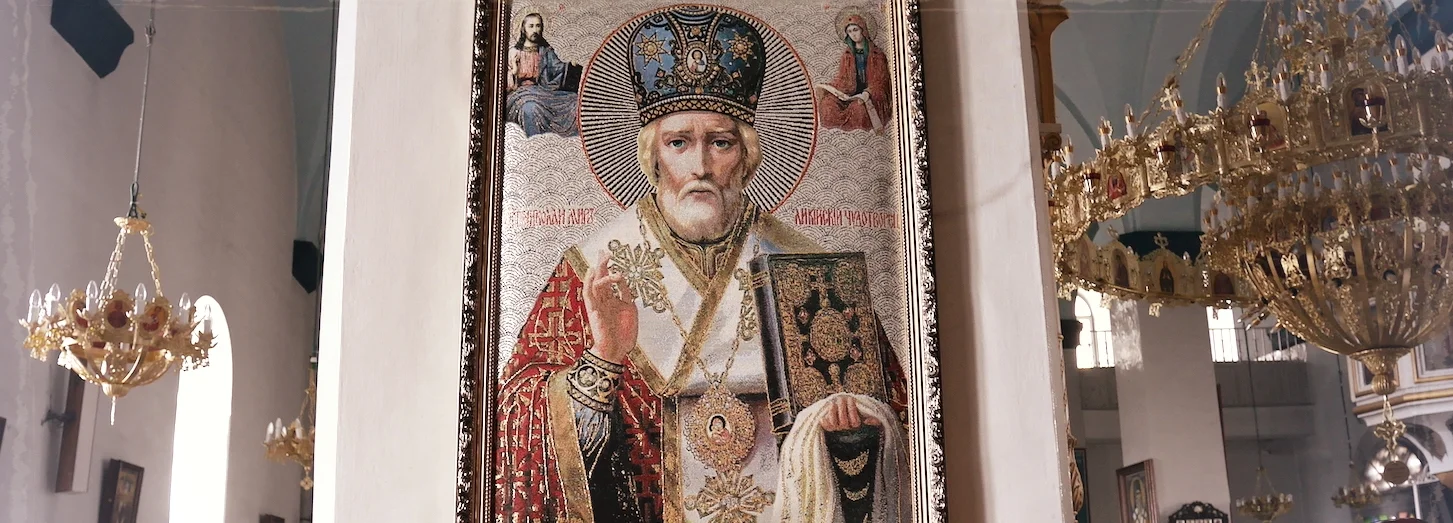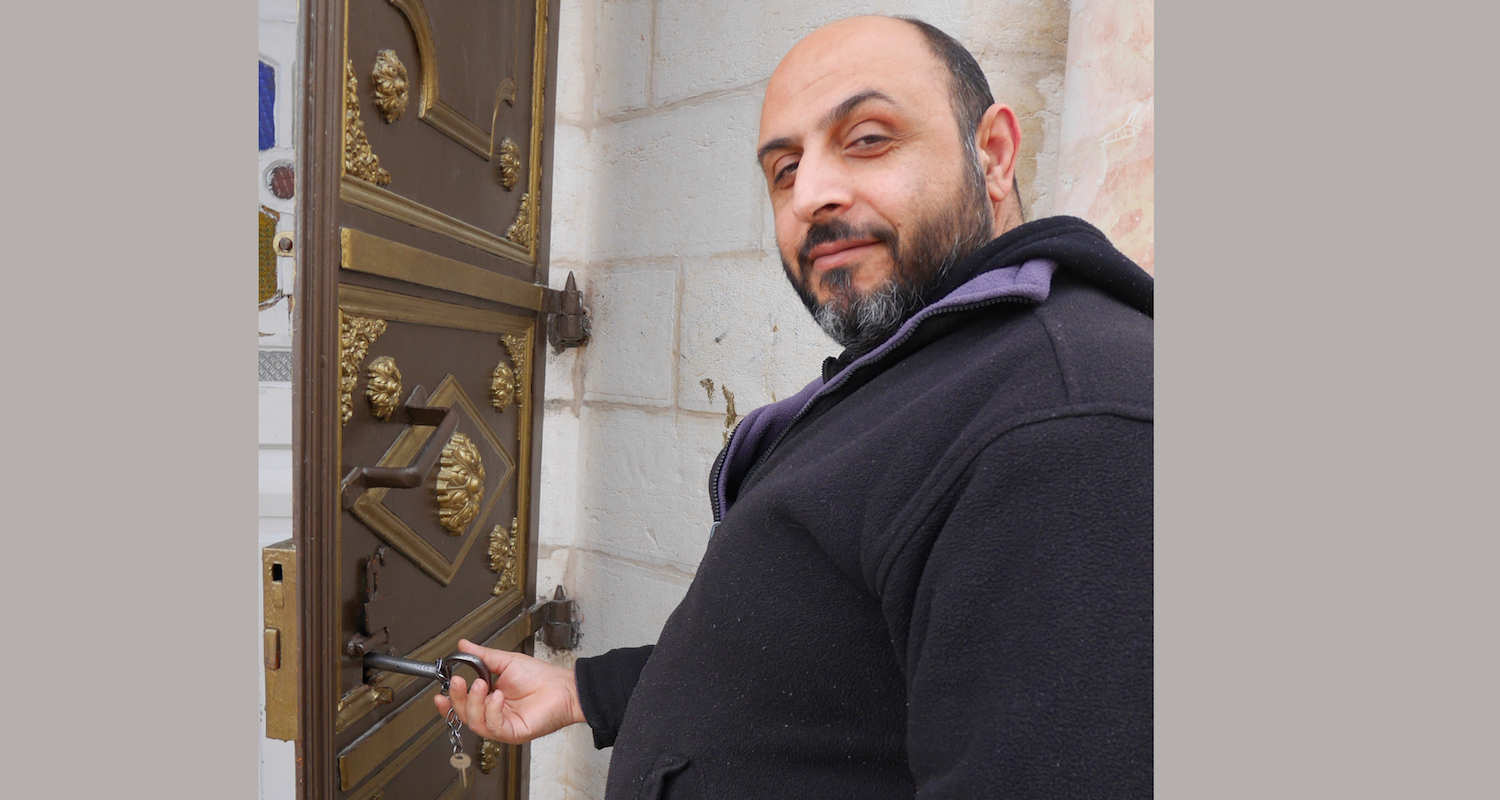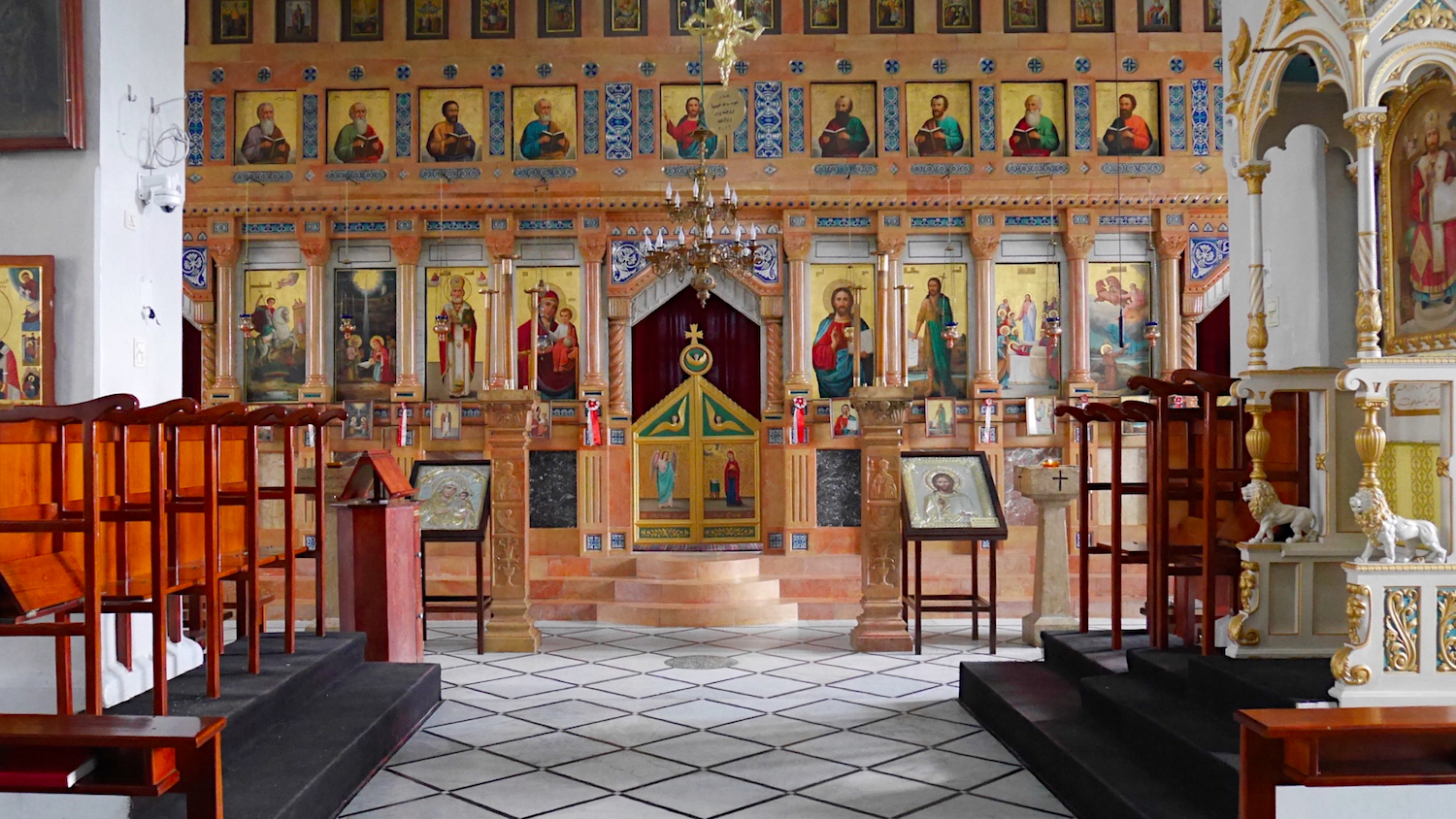For many, the Christmas lights come down on New Year's Day. In the land of the Bible however, they are still blinking with gusto. In fact, my little room is illuminated on and off and on again. It is strobe-like, carnavalesque. I bury my head in my pillow. My window faces Virgin Mary Street, the main drag here in Bayt Jala.
Bayt Jala rests high in the Judean hills and tumbles downslope into Bethlehem. Unlike other communities in Palestine, it is a distinctly Christian place. And for the Orthodox (who represent a majority of local believers), Christmas is just days away.*
The village of Beyt Jala sits on a hill overlooking Bethlehem. The golden caps of the Church of Mar Nicola set it apart from the others.
In the morning, I pull on my coat (because of the rain) and head up the street. My goal is to visit the Orthodox Church of Mar Nicola (Saint Nicholas). The site is not on the pilgrim trail for most westerners, but it is an important stop for believers from Eastern traditions.
St Nicholas is festively decorated with a Santa Claus.
On two previous occasions I had tried to visit. On this day I wonder if I'll be any more successful. I climb the steep road looking for life. All is quiet. I go again to the front door if the church and bang. Nothing. I walk around to the side door and bang again. A door from across the street opens. I turn. A man in a black hoodie crosses the street. In his hand is a steel key.
We exchange pleasantries in Arabic. I learn that is name is Nader, that he is not a priest, and that he has lived in Beyt Jala all his life. From there the conversation goes English.
The keeper of the key.
"Where are you from?" he asks.
"Tennessee." I answer.
"I visited California." he offers proudly.
"Would you like to visit the church?" he asks.
"Please, yes!"
The iconostasis is decorated with icons in an Orthodox church. It screens the sanctuary from the nave. Only a priest may pass through the "Beautiful Gate" in the center. The iconostasis at Mar Nicola is considered a mason's masterpiece, cut from local stone.
We enter through the heavy doors. Inside is a large room, brightly colored. We stand in the center of the space. An iconostasis is in front of us, a dome above us, and high-armed chairs (stadicia) flank us on either side. It looks thoroughly Orthodox to me.
"It is a mixed style," Nader shrugs. "Byzantine and Russian."
A chandelier is suspended beneath a dome. The saints peer down at us.
Saints and apostles loiter in a blue sky.
"What is the connection to Saint Nicholas?" I ask.
I already knew from my own reading that the man who was the inspiration for Santa Claus was a historic character from southern Turkey. He is remembered for working miracles and giving secret gifts.
Palestinian Christians remember him for other reasons.
"Saint Nicholas came to Beyt Jala. He stayed for two years."
Nader knows the story of the pilgrimage of Nicholas. Because Nicholas wanted to walk where Jesus walked, he traveled from his home in what is today southern Turkey to the biblical Heartland (and not by sled and reindeer!). This happened in the years between AD 312-315. During that time Nicholas lived with a few others who practiced a simple monastic life. He made his home in a cave and given his notable life, a church was eventually built over the spot. The ancient church was in a state of disrepair when it was finally torn down by the villagers and replaced in 1925. That is when they found the cave and the mosaic.
Nader stopped.
I took a chance. "Can I see the cave?"
"Of course." Nader gestured to a set of stairs on the right side of the nave. How did I miss the stairs?
Nader sat down. I descended alone.
Mar Nichola greets visitors as they reach the bottom of the stairs.
I was greeted by more stadicia and icons. The icons depicted several biblical characters and saints. Nick was prominent among them.
As suggested, the cave was situated directly under the apse. I reached it through a few more stairs. It was decorated with a single icon on the back wall and a mosaic floor. In the center of the mosaic was a double headed eagle, an ancient symbol of the Byzantine church.
The monastic home of Mar Nichola.
If this local memory of Nicholas is accurate, it puts the saint in the area of Bethlehem prior to the construction of Helena's Church of the Nativity (AD 327-339) and well before the arrival of another famous cave-dweller and translator, Saint Jerome (Hieronymus) (AD 384-420). One can only wonder what Nicholas saw in Bethlehem at the time of his pilgrimage.
A visit to the village of Beyt Jala, Palestine, is special anytime. But visiting the Orthodox Church of Mar Nicola at Christmas adds another dimension to the traditions of the season.
*The celebration of Christmas falls on different days in different traditions. For many in the Orthodox tradition, Christmas falls on January 7, 2018. This practice highlights the difference between the use of the Gregorian calendar vs the use of the Julian calendar.







